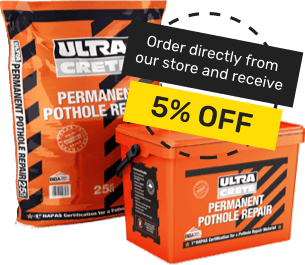High friction surfacing, or HFS, provides skid-resistance for roads and other surfaces in order to ensure maximum safety. With a long history of proven success in improving road safety and saving lives, high friction surfacing benefits both road users and pedestrians, particularly in dangerous conditions such as adverse weather.
Whether you are a private road owner or are working on behalf of a local council to ensure road safety, HFS is something that should be a top priority when considering accident reduction.
What is high friction surfacing?
High friction surfacing is a material and a process by which road surfaces become less prone to skidding and loss of friction. Instead of a smooth and slippery surface, high friction surfacing creates thousands of tiny contact points, known as a micro-texture. This means that a vehicle’s tyres have more contact with the road, allowing them to better grip the surface and come to a safer stop.
The way in which this is achieved is through combining a binder with an aggregate known as calcined bauxite, which can then be applied hot or cold. Cold HFS systems apply the liquid binder onto the surface first, followed by the calcined bauxite aggregate. Hot-applied systems, by contrast, involve a pre-mixed material.

How does high friction surfacing work?
High friction surfacing provides such an impressive level of anti-skid resistance because of the anti-abrasive properties found in the calcined bauxite. However, it is not just anti-abrasion that causes this material to be invaluable to road safety. Its resistance to polishing is also extremely important, ensuring that the anti-skid properties have the longest possible lifespan.
How long have Hi-Way been using high friction surfacing?
HFS has a long history of use here in the UK, with the first trials conducted all the way back in 1967. These yielded extremely positive results, with an immediate 50% reduction in skid related accidents and casualties. While the use of HFS did see a decline in the 70s due to budgetary restrictions and limitations, we can see a definite increase in the following decade, when engineers recognised the broader possibilities of savings that it provided.
This was the first point at which road surfacing became more than a matter of preventing wear and tear. The advent of high friction surfacing also saw the authorities take a more holistic view towards road safety, considering both the economic benefits and the safety of road users in tandem.
Where is HFS used?
Thanks to its enhancements to road safety, HFS is widely used on road surfaces, particularly where accidents as a result of collisions are highly likely. Areas where vehicles need to quickly slow down or stop and could result in a skid-related accident are particularly vulnerable, making HFS a popular choice for junctions, pedestrian crossings, roundabout approaches and fast bends. It is also often found on bus lanes and cycle lanes.



However, HFS is not used for roads and highways alone. Its textured appearance can also be used as a decorative addition to spaces such as car parks, heritage sites, and any other sort of pathway. HFS is also popular in car parks due to the need for various coloured bays (disabled, parent and child etc), as well as clearly defined walkways for pedestrians to travel safely.
What are the benefits of high friction surfacing?
High friction surfacing has a number of benefits that help to improve road safety, most notably decreasing braking distance and reducing skid risk. It also creates a general visual awareness of a change in surface, and thus indicates where there are blackspots, or areas where accidents are most prone. As a result of these benefits, HFS has led to the reduction of road accidents by around 57% since its introduction in the 1950s.
On top of providing excellent results, high friction surfacing is also a fast process, meaning less disruption to road users, emergency services and local businesses. As well as the minimal time taken to apply these materials, HFS can be effective for up to 10 years with care and attention, making it a worthwhile investment for the long term. In order to preserve its lifespan for as long as possible, HFS should be applied only to sound substrates that have been well-prepared, and are in fair-to-good condition.
How cost effective is high friction surfacing?
It is thought that one motorway fatality can result in costs of up to £1.4 million. By using HFS, which reduces these accidents by up to 57%, transport authorities can benefit from a first year return rate of 352%. According to The London Accident Analysis Unit, of the 1,700 roads treated with HFS in London alone, there were savings of £24 million from a total cost of £3 million.
Of course, when discussing the cost effectiveness of something like high friction surfacing, it is vital to point out that no amount of monetary savings can be compared to the value of human lives, and the prevention of unnecessary death and injury. That being said, it is also true that the use of HFS helps to save money for emergency services, as well as local and national governments.
__
One of the most important factors to take into consideration when discussing high friction surfacing is that local authorities have the responsibility to ensure that their contractors are qualified and properly trained. All operatives should have an NVQ level 2 in HFS, as well as CSCS Site Safety training and the Company must be a BBA/HAPAS approved installer using BBA/HAPAS approved products to clause 924.
It’s only with these certifications and this training that road safety can be ensured to the highest possible standard. Without this, the durability and longevity of the HFS – and road surfaces more generally – may be compromised, putting the lives of many road users at risk.

